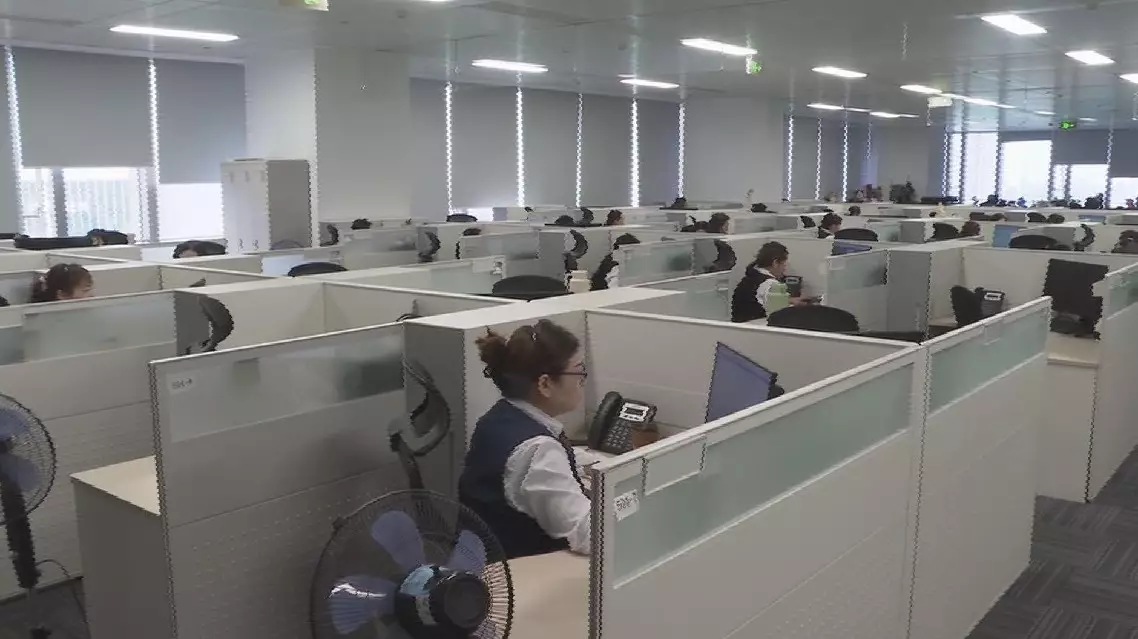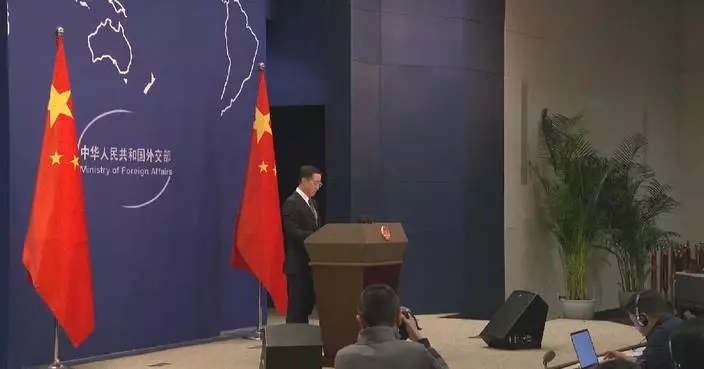A slew of stimulus measures, including rate cuts, aimed at boosting economic growth and stabilizing the property market, has triggered a broad rally in China's stock market.
On Monday, Chinese stocks soared with the two major bourses setting a fresh record in combined turnover, buoyed by the stimulus policies launched last week.
At a customer service center of a securities brokerage in Beijing, hundreds of customer service workers were seen busy receiving calls from clients amid a dramatic increase in phone inquiries.
"The number of new account openings has surged by 106 percent, while visits to the online investor education platform have reached 11.16 million, marking a 146 percent increase compared with average hits. In response to this surge, additional staff have been assigned to ensure 24/7 online support," said Liu Bing, business director of China Galaxy Securities.
In Shanghai, there has been a rapid rise in account openings among small and medium-sized investors, and institutional investors have also been showing growing interests in expanding investment.
"Driven by the favorable policies announced by ministries and commissions on Sept. 24 (Tuesday), institutional investors have demonstrated a strong willingness to trade. Our colleagues at the brokerage have been working overtime to ensure thorough network testing in response to the market surge," said Gu Feng, director of securities business under Guotai Junan Securities.
For Shenzhen City in south China's Guangdong Province, a hotspot for private equity funds, communication between fund managers and clients has significantly increased following the release of the stimulus policies.
The previous once-a-day telephone conference is now held four or five times day, as both staff members and investors are willing to analyze the key points of the policies so as to make better decisions on investment.
"The People's Bank of China is facilitating loan support, so funds, brokerages, and insurance companies are directly purchasing stocks to encourage share repurchase of listed companies. From my point of view, the new policies have been significant and received active response from share holders," said Qin Guowen, general manager of a private equity management company in Shenzhen.

China's stock market embraces surge due to stimulus policies
Macao has been emerging as a global hub for conventions and exhibitions in recent years by exploring the enormous opportunities in the sector, driving the region to advance its economic diversification and embrace a brighter future.
Macao has received many awards this year, such as the Best Convention City (Asia) and the Best BT-MICE City, showcasing the recognition for and influence of Macao's exhibition industry.
More than 1,000 electronic game enthusiasts from all over the world gathered recently in Macao to participate in a esports themed event.
Su Zhili, organizer of the event, said that Macao's rich experience in hosting large-scale events, coupled with its good infrastructure, has driven him to choose the region as an ideal destination to hold such an activity.
"Macao has held many similar large-scale events. It has rich experience, and the facilities at the venue are relatively mature, so we can start our work comfortably," said Su.
During the first three quarters of 2024, Macao held more than 1,000 conferences and exhibitions in total.
"We will invite more professional, special conferences to be held in Macao and also cultivate more exhibition brands with international influence in Macao, so as to promote Macao's exhibitions to be more market-oriented, professional, international, digital and greener from various aspects. This is our goal," said Elaine Wong, member of the Macao Commerce and Investment Promotion Institute.
In addition, multiple large exhibitions and conferences, such as the Macao International Trade and Investment fair, the Macao Franchise Expo, and the International Infrastructure Investment and Construction Forum, are held regularly in Macao.
With the introduction of a series of policies and measures to facilitate the exchanges between the mainland and Macao, as well as the construction and development of the Guangdong-Hong Kong-Macao Greater Bay Area and the Guangdong-Macao In-Depth Cooperation Zone in Hengqin, Macao's convention and exhibition industry will embrace more opportunities for development in the foreseeable future.
"We have such a good industrial base in the Greater Bay Area. The mode of 'Convention and Exhibition + Industry' not only integrates the industries of Macao, but also the industries of the Greater Bay Area. In addition, Macao actively integrates into the national development and plays a role in the Belt and Road. Why are we so confident in Macao's convention and exhibition sector? Because it is backed by the motherland, and the country gives Macao great support," said Alan Ho, chairman of the Macao Association of Convention, Exhibition and Tourism Sectors.

Macao emerges as global hub for conventions and exhibitions, driving economic diversification and international recognition










